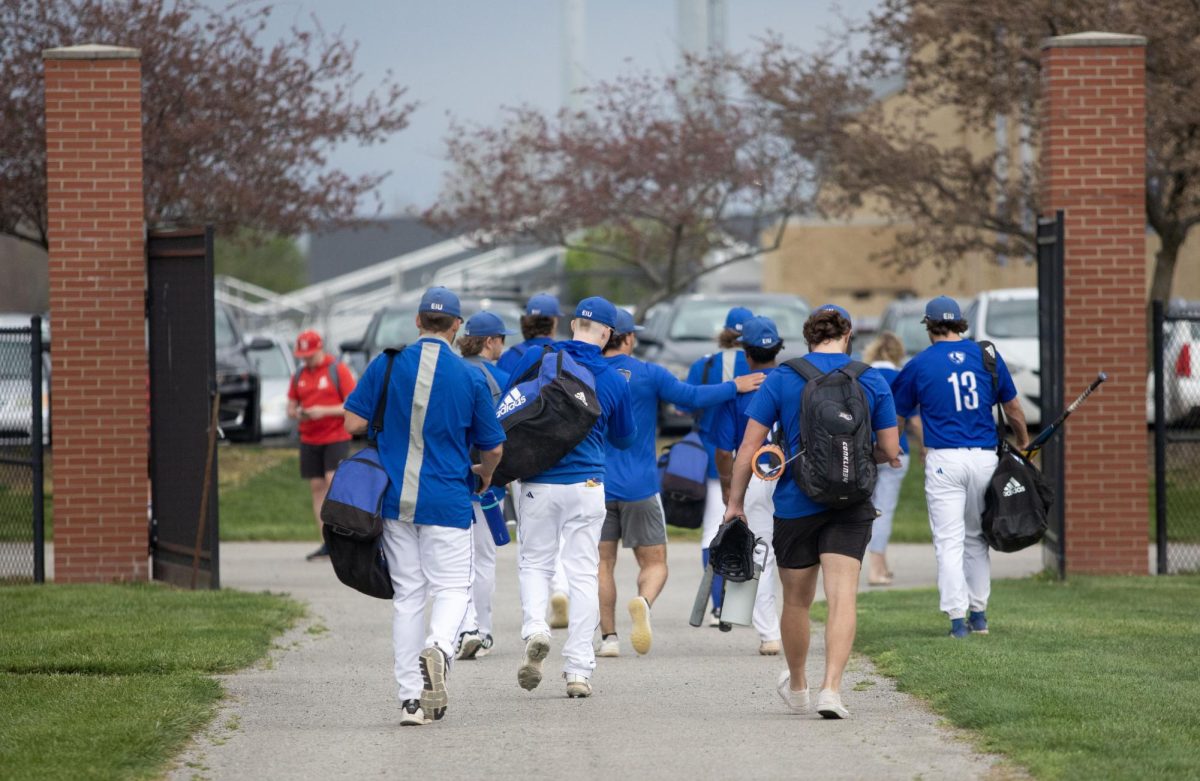Glider camp flies to Charleston
The Coles County Airport has seen its share of young aviators throughout the month of June; first with the Civil Air Patrol’s Johnson Flight Encampment, and most recently the National Glider Academy.
The glider encampment, which ran June 16-24, allows young people from “the tip of Maine to Los Angeles” to attend the camp, unlike the Johnson camp which is only for people around the Midwest, said Tom O’Shea, academy director.
As the name says, the National Glider Academy teaches 14 to 20 year olds how to fly gliders. But it is not as easy as just signing up for the camp and showing up, one must first be a member of the CAP, and then go through an interview process, said O’Shea.
When the cadets arrive at the camp, they are divided into two groups, Alpha and Bravo. From 8 a.m. to noon, one group will spend time learning how to actually fly the Schweitzer 2-33 gliders, while the other group will spend that time in the classroom learning about basic airplane behavior, and then more specifically the characteristics of the glider. After lunch, the two groups switch and go until 5 p.m. or sometimes until dark, said Walter Pleasant, a ground instructor.
“They [the cadets] cover at least 22 hours of ground school and need at least 30 flights before they can fly solo, but many have never been in a glider before so it will take more than one summer,” said Pleasant.
Mitch Mckinnon, a 15-year-old cadet from Alabama, said this is his first time attending the camp. “I’ve been flying gliders for a while but this is my first year at camp. I like to fly and I want to go to the Air Force Academy.”
By using a scaled-down model of the glider in the classroom, the students are shown a basic idea of how to maneuver the glider and how come out of stalls.
On the actual runway, the gliders become airborne through an aero tow. The tow ships, consisting of Cessna 172s and 182s, tow the gliders and young pilots inside by a cable to about 2,000 to 3,000 feet at first.
“We take them up to 2,000 to 3,000 feet so they have time to play with the controls, see how it turns and handles, have an idea how to recover from stalls and also to see the general layout of the area,” said tow pilot Stephen Gerrish.
The speed at which it takes to reach that altitude is around 65 mph and it takes about eight minutes or so. Once the chosen altitude is reached, the tow cable is released and the cadet takes over the controls, of course with an instructor sitting with them. When the instructor thinks the cadet is ready, they will fly up to about 1,000 feet and practice landing.
“In order to land you have to have control,” said Gerrish.
“One of the most important parts for the students is learning how to land,” said O’Shea.
For some, at the end of the week the best part of the camp is not just learning to fly, but also about working with new people and making friends.
“I really like working with the kids. I’m in the cadet program; I do orientation flights as well as instruction. I really like teaching,” said Gerrish.
O’Shea said he enjoys working with the 18 different members in his staff.
Austin Murch, Oklahoma, and one of the 21 cadets, said that his favorite part of the camp was, “All the friends I have made.”
“I joined because I wanted to go to the Air Force Academy, but the best part was all the new people I met.”
Glider camp flies to Charleston

Cadet Jack Miller, a 16 year-old from Orlando Florida, is moved onto the runway at Coles County Airport by other Civil Air Patrol cadets Friday morning. Miller was preparing for his first solo flight in a Scweizer SGS2-33 glider.





































































